|
|
|
MONUMENT AT TLACOTÁN
To the Third Guadalajara |
By John Pint 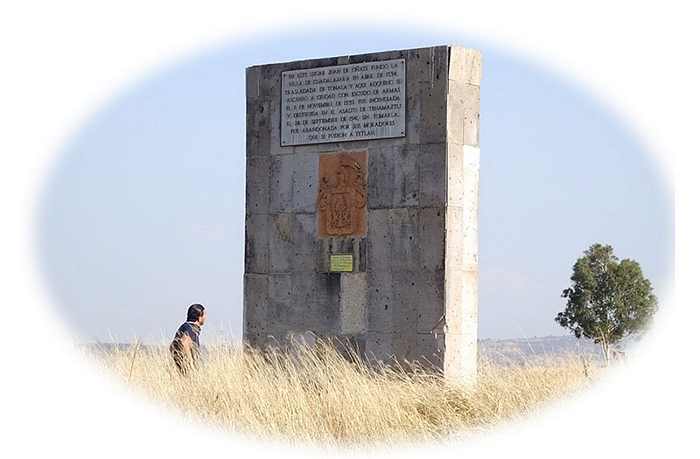 We were driving along a lonely road in western Mexico, just north of the Santiago River Canyon, with archaeologist Francisco Sánchez, heading for home after visiting Rancho el Mexicano, famous for being “in the middle of nowhere.” “I know this road,” said Francisco. “Do you realize we are very close to one of the early incarnations of Guadalajara? There’s a monument marking the spot and I know where it is.” Naturally my friend Rodrigo and I prevailed upon the archaeologist to show us the historic spot. As we drove along, he explained that the first attempt to found Guadalajara was in Nochistlán in Zacatecas, but there wasn’t enough water and that plan was scuttled. Next they tried Tonalá, but Nuño de Guzmán chased them away, saying he wanted that land for himself. Then they decided upon the spot we were heading for, called Tlacotán, located 17 kilometers northeast of today’s Guadalajara Zoo. Francisco stopped the car. “We’re here. The monument is just a few steps away.” Well, this place looked even more solitary than Rancho el Mexicano and I couldn’t see a monument anywhere. But, all good adventures in Mexico start with a step over, under or through a barbed-wire fence and this was no exception. On the other side of the fence was a row of trees and then we saw it, a great slab looming above us like the monolith in 2001, A Space Odyssey and all around it nothing but cornfields as far as the eye could see. A big engraving stated that this was the place where the village of Guadalajara was founded in 1535 and where it was declared a city by royal decree in 1539. 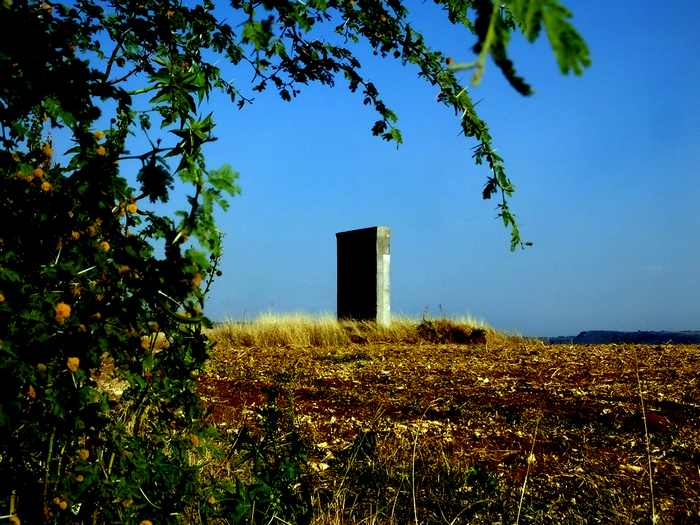 “But there’s nothing here! Where are the ruins?” we asked our guide, who assured us that back in those days there were houses, a cathedral and a big plaza shaded by a tall Zapote tree. “So, what happened?” I asked. “What happened was Tenamaztle, leader of the Caxcan indians, who, according to the records of the Spaniards, appeared on top of those distant hills on September 27, 1541 with 15,000 men, all of them infuriated by the Spaniards’ custom of enslaving native peoples. Pedro Plascencia, who happened to be out in that direction collecting firewood, saw them coming down the hills in great waves, but the Spaniards had foreseen the possibility of a big attack and had reinforced one of their houses, erecting towers and walls around it and sealing up all the doors but two, to protect their little city. And they were attacked by thousands of Indians, most of them naked, painted red from head to foot, their skulls shaved except for a pony tail. Some of them wore clothing or armor taken from dead Spaniards, but they were armed only with bows and arrows. “For four hours the Spaniards fought back with their guns, crossbows and cannons. When it was all over, they say 15,000 Indians lay dead, with rivers of blood everywhere, but only two Spaniards had been killed. So Cristóbal de Oñate, governor of the city, ordered that the corpses be thrown over the cliff side, into the Río Verde Canyon to prevent an epidemic, but all the bodies lying more than two kilometers from the city were left in place as proof of what had happened and a warning to any other Indians that might want to attack them.” 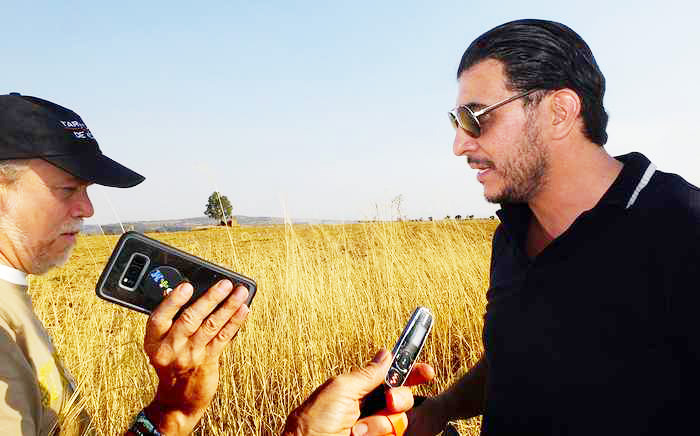 The following day, the archaeologist told us, the Spaniards celebrated a Mass, giving thanks for the miracle they claimed had occurred during the battle. They said a man dressed all in white and riding a white horse had appeared in the middle of the fighting, holding a cross in his right hand and a sword in the other. “It was San Miguel,” they said, “and he is the one who killed most of the Indians.” Saint Michael, however, was not the only hero in that battle. A group of ten soldiers were in charge of defending one of the doors in the home-made fortress when suddenly a huge and powerful Indian burst in, so big that no one dared go even near him. “In the room,” said Francisco, “was Doña Beatriz Hernández. She was dressed in armor with a machete in her belt. Pulling it out, Beatriz walked right up to the Indian and slashed at his throat. The huge man crashed to the ground and Beatriz finished him off. This was the moment she got her reputation for being feisty and brave and not letting anyone tell her what to do.” The next day all the women and children left Tlacotán with an escort and followed the Camino Real to Tonalá, a journey of at least eight hours. A certain number of Spaniards stayed on, waiting for the arrival of the Viceroy of New Spain, Antonio de Mendoza, with thousands of friendly Indians who would finish off the rebellious ones. From Tonalá, soldiers explored the Valle de Atemajac to find a better place to reestablish Guadalajara and a meeting took place near the present Teatro Degollado. There was much disagreement and to end it, Cristóbal de Oñate pulled out his knife and drove it into a tree, declaring that this would be the location of the new Guadalajara, in the name of the king. Still, the arguing continued until Doña Beatriz stood up and said, “El rey es mi gallo (I stand by the king, a quote from Don Quijote) and we are staying here for better or for worse!” “You heard the lady,” said Oñate, and that ended the discussion. And that’s why you’ll find her statue at the southeast corner of the Teatro Degollado. 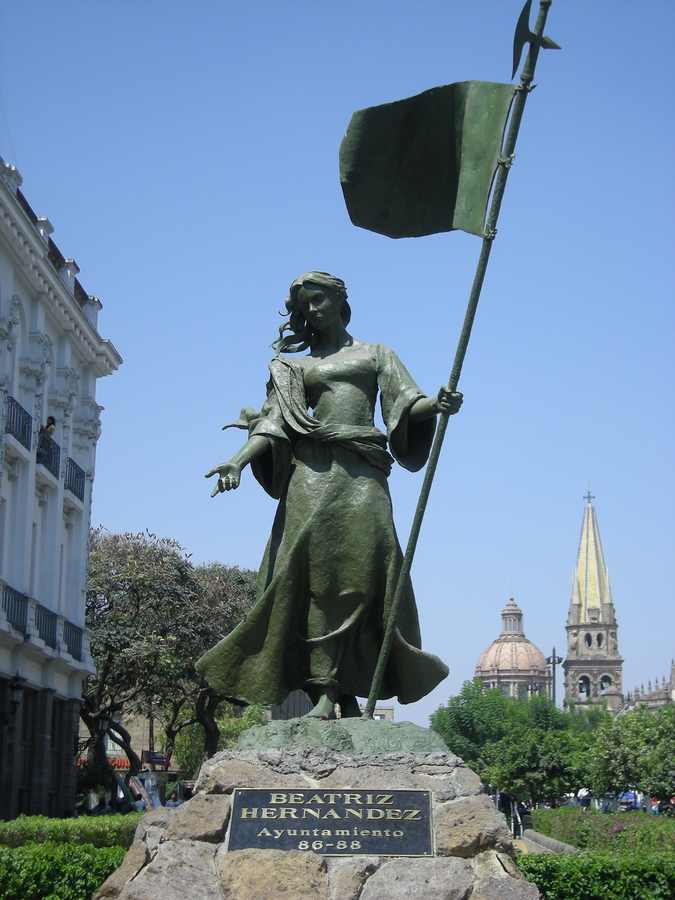 Photo by Alejandro Linares Garcia. Our thanks to Wikiloc. How to get there Thanks to Google Maps it is quite easy. Just put “N20.79130 W103.15546” as your destination (note the space before W). You can also see the route on Wikiloc.com under “Tlacotan Monument.” Enjoy the spectacular view of Oblatos Canyon as you pass through it, but don’t expect to see anything at the monument but the monument itself. From northern Guadalajara the drive should take one hour and 15 minutes. Location
of Tlacotán Monument to the third Guadalajara. Image courtesy of Google
Maps.
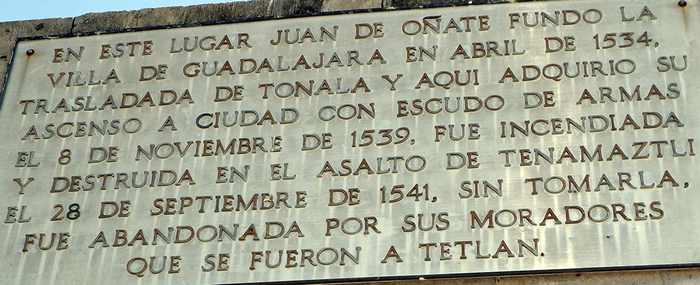 Legend on theTlacotán Monument to the third Guadalajara. Text and Photos © 2018 by John & Susy Pint unless otherwise indicated. HOME |
